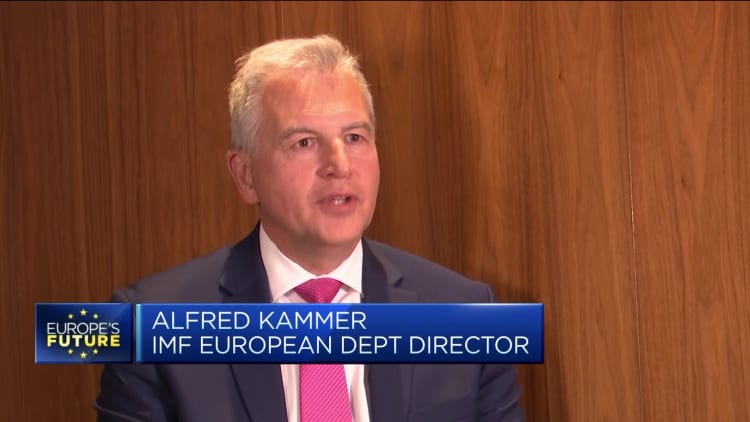Christine Lagarde, President of the European Central Bank (ECB), announced a new rate decision Thursday following new inflation data.
Caisa Rasmussen | Afp | Getty Images
The European Central Bank on Thursday increased its benchmark interest rate by 25 basis points as it continues to fight a surge in consumer prices, with rates now at levels not seen since November 2008.
“The inflation outlook continues to be too high for too long,” the ECB said in a statement. With the latest announcement, the bank’s benchmark rate will move to 3.25%, as of May 10.
The decision comes after inflation figures released earlier this week showed an increase in the headline rate to 7% for April. At the same time, core inflation, which excludes food and energy prices, decreased slightly to 5.6%. “Headline inflation has declined over recent months, but underlying price pressures remain strong,” the central bank said Thursday.
The ECB embarked on its current hiking path in July 2022, when it brought its main rate from -0.5% to zero. However, despite consistent rate increases since, inflation remains well above the ECB’s target of 2%. Estimates published last week by the International Monetary Fund suggest that inflation will not reach the ECB’s target until 2025.
Recent data also shows that the euro zone economy grew less than expected in the first quarter of the year, registering an anemic GDP of 0.1%. However, unemployment numbers showed a slight improvement in March from the previous month at 6.5%.
Furthermore, a recent ECB survey showed that banks have significantly tightened access to credit, which could suggest that higher interest rates have started to take its toll on the real economy.
‘Not pausing’
In its latest rate decision, the ECB acknowledged “the past rate increases are being transmitted forcefully to euro area financing and monetary conditions,” however it also noted that “the lags and strength of transmission to the real economy remain uncertain.”
The ECB also said it would likely stop reinvestments under its Asset Purchase Program (APP) in July. APP is a bond-buying stimulus package which started in mid-2014 to deal with persistently low inflation levels. It was frozen between January and October 2019 and then lasted until July 2022 — but continued to reinvest payments from the assets that had matured.
Signaling that it could stop reinvestments was seen as a hawkish compromise for the ECB this week, as some members of its Governing Council would likely have called for a larger hike.
In its statement, the central bank did not provide further guidance about upcoming rate decisions.
ECB President Christine Lagarde said Thursday there is a “divergence” across sectors of the economy. Prospects for the manufacturing sector are worsening, whereas the services sector is growing, she said.
“I think it’s fair to say that everybody agreed that increasing the rate was necessary and that second we are not pausing, that is very clear … and we know that we have more ground to cover,” Lagarde stated.

The Federal Reserve on Wednesday said it was increasing rates by 25 basis points, bringing its funds target range to 5-5.25%, the highest level since August 2007. The central bank also suggested it could be close to pausing rate hikes.
The two central bank decisions come at a time when pressures on the banking sector, particularly stateside, have not dissipated. Earlier this week, JPMorgan announced its acquisition of First Republic, a smaller lender that has struggled to survive during the higher interest rate environment.
The CEO of Unicredit, an Italian bank, told CNBC Wednesday that he’s expecting more bank rescues in the U.S.. These stresses in the banking sector could give further ammunition to dovish central bankers, amid wider concerns about the implications of higher rates on the real economy.



